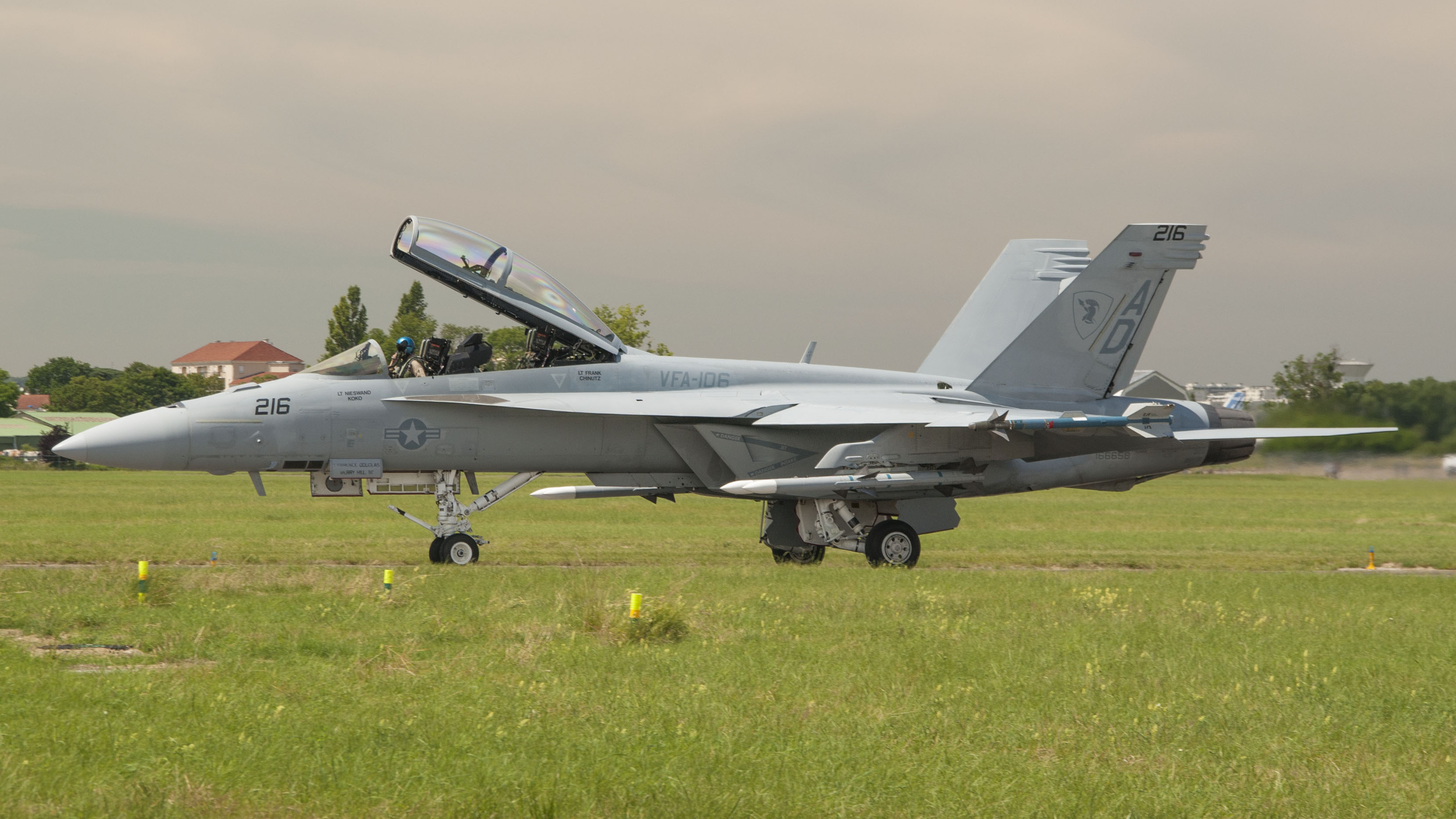
The McDonnell Douglas F/A-18A/C is a single seat shipboard and shore-based multi-role fighter and attack aircraft. The F/A-18B/D is a two seat operational trainer. The F/A-18 fills a variety of roles: air superiority, fighter escort, suppression of enemy air defenses, reconnaissance, forward air control, close and deep air support, and day and night strike missions.
The Boeing F/A-18E/F Super Hornets are a third bigger than the F-18A/B/C and D Hornet with half as much parts.
In the early 1970’s the US Navy would procure a version of the USAF’s winning light weight fighter contender as a low-cost supplement to the F-14 and as an A-7 replacement. The US Navy however was implacably hostile to the winning single-engine YF-16, and decided to adopt an aircraft developed from the losing Northrop YF-17 Cobra. McDonnell Douglas was brought in as prime contractor and the F/A-18 was born.?
The first flight of the Northrop YF-17A Cobra (72-1569) was on June 9th 1974, first flight of the YF-18A Hornet came on November 18th 1978 (160775) with McDonnell Douglas test pilot Jack Krings. The maiden flight of the F/A-18C (163427) took place on September 3rd 1986. First flight of the F/A-18E Super Hornet (165164) was November 29th 1995, the two seats F/A-18F followed on April 1st 1996.
The F/A-18 has a digital control-by-wire flight control system which provides excellent handling qualities, and allows pilots to learn to fly the airplane with relative ease. At the same time, this system provides exceptional maneuverability and allows the pilot to concentrate on operating the weapons system. The F/A-18C/D Hornets carry the Advanced Medium Range Air-to-Air Missile (AMRAAM) and the infrared imaging Maverick air-to-ground missile. Two years later, the C/D models came with improved night attack capabilities. The new components included a navigation forward looking infrared (NAVFLIR) pod, a raster head-up display, night vision goggles, special cockpit lighting compatible with the night vision devices, a digital color moving map and an independent multipurpose color display. Although the F/A-18C/D’s future growth is now limited, it will also continue to fill a critical role in the U.S. Navy’s carrier battle group for many years to come and will be an excellent complement to the larger, longer range, more capable F/A-18E/F Super Hornet.
A total of 1.670 F/A-18A/B/C/ and D Hornets have been delivered since 1978.
The multi-mission F/A-18E/F “Super Hornet” strike fighter is an upgrade of the combat-proven night strike F/A-18C/D. The Super Hornet will provide the battle group commander with a platform that has range, endurance, and ordnance carriage capabilities comparable to the A-6 which have been retired. F/A-18E/F’s avionics and software have a 90 percent commonality with current F/A-18C/Ds. However, the F/A-18E/F cockpit features a touch-sensitive, upfront control display; a larger, liquid crystal multipurpose color display; and a new engine fuel display. The Boeing F/A-18E/F Super Hornets are a third bigger, with half as much parts. Increased engine power comes from the F414-GE-400, an advanced derivative of the Hornet’s current F404 engine family. The F414 produces 35 percent more thrust and improves overall mission performance. Enlarged air inlets provide increased airflow to the engines. This gives for aircraft carrier operations, about three times more payload can be brought back to the ship.
The US Navy is planning to procure a minimum of 432 Super Hornets.
The EA-18G will retain everything in it that the F/A-18F Super Hornet has today with two exceptions. The wing tip stations will have receiving antennas. The gun will be replaced with avionics boxes containing the LR-700 receiver and satellite communications, which interface with the ALQ-99 Tactical Jamming System pods. In November 15th 2001 Boeing successfully completed an initial flight demonstration of its EA-18G Airborne Electronic Attack (AEA) concept aircraft. The test used an F/A-18F Super Hornet to carry three ALQ-99 jamming pods and two fuel tanks while measuring noise and vibration data and assessing aircraft flying qualities.
The 5-year SDD (system design and development) program for the EA-18G runs from FY04 until early FY09 and encompasses all laboratory, ground test, and flight tests from component level testing through full-up EA-18G weapons system performance flight-testing. The EA-18G is 99 percent common with the F/A-18F Super Hornet.
Developing Nation: |
United States of America. |
| Manufacturer/Designer: | McDonnell Douglas/ Major sub-contractor Northrop. |
| Task: | Shipboard and shore-based multi-role fighter and attack aircraft. |
| First Flight: | – YF/A-18A November 18th 1978 (160775). – F/A-18C September 3rd 1986 (163427 – F/A-18E November 29th 1995 (165164). – F/A-18F April 1st 1996 (165166).-EA-18G November 15th 2001 (165166). |
| First Delivery: | F/A-18A May 1980. |
| First Operational: | – F/A-18A/B October 1983. – F/A-18C/D September 1987. – F/A-18E/F September 2001. |
| Crew: | – F/A-18A/C/E 1 – F/A-18B/D/F 2 – EA-18G 2 |
| Ejection Seat: | – Martin Baker MK.14 NACES (New USN ACES). |
| Specifications: F/A-18C Hornet | |
| Wing Span: | 11,43 m and with tip-mounted AAM’s 12,31 m. |
| Wing Area: | 37,16 sq m. |
| Length: | 17,07 m. |
| Height: | 4,66 m. |
| Engine (s): | – Two General Electric F404-GE-400 turbofans with 71,2 kN.- Two General Electric F404-GE-402 EPE turbofans (since 1992) with 78,7 kN. |
| Weight: | – Empty:10.445 Kg. – Internal fuel: 4.926 Kg. – External fuel: 3.053 Kg. – Max. payload: 7.031 Kg. |
| Max. Take off weight: | Max. take off: 25.401 Kg. |
| Max. Speed: | 1.915 km/h at high altitude. |
| Operating altitude: | 15.240 m. |
| Max. Range: | – >3.336 km Ferry range.- 1.065 km Attack mission combat radius. – 740 km Air to Air mission. |
| Performance: | – CAP endurance from carrier 1 hour 45 min. |
| g limits: | -3 to +9 |
| Radar: | – Hughes AN/APG-65 multi mode digital fire control unit. – Hughes AN/APG-73 multi mode digital fire control unit (since 1994) |
| Centerline hardpoints): | 3. |
| Underwing hardpoints: | 6. |
| Wingtip hardpoints | 2. |
| Weapons: | – 20 mm M61A1 Vulcan six barrel rotary cannon with 578 rounds of ammunition.- AIM-7F/M Sparrow. – AIM-9L/M Sidewinder. – AIM-120 AMRAAM. – AGM-62 Walleye. – AGM-65 Maverick. – AGM-84 Harpoon. – AGM-84K Stand-off Land Attack Missile-Expanded Response. – AGM-88A HARM. – CBU-52 bombs. – CBU-58 bombs. – CBU-59 cluster bombs. – CBU-71 bombs. – CBU-87 cluster bombs. – CBU-89 bombs. – CBU-90 bombs. – CBU-92 bombs. – CBU-93 bombs. – GBU-10 Paveway II. – GBU-12 Paveway II. – GBU-15 guided weapons. – B57 nuclear bombs. – B61 nuclear bombs. – GP Bombs. – Joint Direct Attack Munitions. – Paveway bombs. – 5-in Zuni unguided rockets. |
| Extra: | FLIR Sensor on the starboard intake is an infra-red sensor pod. |
Specifications: Boeing F/A-18E Super Hornet |
|
| Manufacturer: | Boeing. |
| Ejection Seat: | Martin Baker MK. US-10S (SJU5/6). |
| Wing Span: | – 13,62 m with missiles. – 9,32 m with folded outer wings. |
| Wing Area: | 46,45 sq m. |
| Length: | 18,31 m. |
| Height: | 4,88 m. |
| Engine (s): | Two General Electric F414-GE-400 |
| Weight: | – Empty: 13.864 Kg – Internal fuel: 6.171 Kg. – External fuel: 7.439 Kg. – Max. payload: 8.050 Kg. |
| Max. Take off weight: | Max. take off: 29.937 Kg. |
| Max. Landing weight: | Max. landing: 19.460 Kg. |
| Max. Speed: | 1.950 km/h at high altitude. |
| Operating altitude: | 15.240 m. |
| Max. Range: | 3.054 km. |
| Performance: | Combat radius: – 720 km hi-lo-lo-hi attack profile with two 480 gallon tanks and four 1000 lbs bombs plus two Sidewinders for self-defense. – 855 km on interdiction mission with three 480 gal tanks. – 1230 km hi-hi-hi profile with two AIM-9, four Mk.83 bombs, three tanks, two sensor pods. – 800 km for fighter escort with two Sidewinders and two AMRAAM’s, internal fuel on Max. endurance from carrier 2 hours 15 minutes. |
| g limits: | + 7,5. |
| Radar: | Raytheon APG-79 Active Electronically Scanned Array. |
| Centerline hardpoints): | 3. |
| Underwing hardpoints: | 6. |
| Wingtip hardpoints | 2. |
| Weapons | – M61A1 20mm cannon with 400 rounds. – AIM-7 Sparrow. – AIM-9 Sidewinder. – AIM-120 AMRAAM. – AGM-45 Shrike. – AGM-62 Walleye ER/DL. – AGM-65E Maverick. – AGM-84 Harpoon. – AGM-84H SLAM-ER land attack missiles. – AGM-88 HARM anti-radiation missiles. – AGM-114 Hellfire. – AGM-130. – AGM-154 JSOW. – CBU-52 bombs. – CBU-59 bombs. – CBU-72 bombs. – CBU-87 cluster bombs. – CBU-89 bombs. – CBU-90 bombs. – CBU-92 bombs. – CBU-93 bombs. – Mk 20 Rockeye bombs. – GBU-10 Paveway II. – GBU-12 Paveway II. – GBU-15 guided weapons. – GBU-24 laser-guided bombs. – GBU-31 JDAM. – GBU-32 JDAM – B57 nuclear bombs. – B61 nuclear bombs. – Mk.84, Mk.82LD, Mk.82HD, Mk.63, Mk.62, Mk.65, Mk.20 and Mk.83 GP Bombs. – LAU 58 rocket launcher. – Mk.20 Rockeye bombs – Paveway bombs. – 5-in Zuni unguided rockets. – MATRA Mistral. – TALD (air-launched decoy). |
| Extra: | Fast Tactical Imagery (FTI-II), a photo reconnaissance intelligence strike module. |
Weapons for the F/A-18E Super Hornet:

F/A-18 Hornet operators: |
|
| Australia. | – 57 F/A 18A |
| – 18 F/A-18B | |
| Canada. | – 98 F/A-18A (CF-188) |
| – 40 F/A 18B (CF-188B) | |
| Finland. | – 57 F/A-18C |
| – 7 F/A-18D | |
| Kuwait. | – 32 F/A-18C |
| – 8 F/A-18D | |
| Malaysia. | – 8 F/A-18D |
| Spain. | – 60 EF-18A+ |
| – 12 EF-18B+ | |
| – 24 F/A-18A (ex US Navy) | |
| Switzerland. | – 26 F/A-18C |
| – 8 F/A-18D | |
| United States. | – 523 F/A-18A |
| – 90 F/A-18B | |
| – 466 F/A-18C | |
| – 160 F/A-18D | |
| – 432 F/A-18E/F (on-order) | |
F/A-18 in combat:
United States:
In operation Prairie Fire March 15th-24th 1984, the Hornet went into action for the first time, flying several ship to shore air strikes against Libyan shore installations that were harassing the US fleet. All Hornets returned to the carriers without any mishap’s.
Desert Storm January 17- February 28 1991:
During the Gulf War (Iraq), 190 navy and US Marines Hornets were used in action, 106 from aircraft carriers and 84 from land based US Marine units. One Hornet was lost in combat, and two in non-combat accidents. Two F/A-18C’s scored air-to- air kills with the AIM-9 sidewinder (two Iraqi Chinese built MiG-21 F-7A’s)
Canada was the second nation with the Hornet in Desert Storm, they had the nickname “Desert Cats”
Southern Watch: March 1 1991- May 1 2003:
Most of the US Marine and US Navy F/A-18 Hornet squadrons were in Operation Southern Watch (non-flying zone southern Iraq) land-based (Saudi Arabia) of from aircraft-carriers (Gulf).
In July 2002, the VFA-115 “Eagles” embarked on the first ever Super Hornet combat deployment.? Their performance was nearly flawless, flying 214 combat missions in support of “Operation Enduring Freedom” and “Operation Southern Watch” with a 100% combat sortie completion rate.? The Eagles dropped 22 JDAM on 14 targets in OSW with total success.
Deliberate Force: Aug.- Sept. 1994:
During the war in Yugoslavia F/A-18’s of the following countries were in action:
United States:
– US Navy
– US Marines Corps
Canada:
Nickname “Balkan Rats”
Spain:
Allied Force: March 24 – June 10 1999:
From Aviano AB, Italy, Canadian and Spanish Hornets flew combat-missions in Kosovo and former Yugoslavia.
Enduring Freedom October 7 2001 – :
Most of the US Marine and US Navy F/A-18 Hornet squadrons were in Operation Enduring Freedom, land-based (Manas, Kyrgyzstan) or from aircraft-carriers (Northern Indian Ocean). They flew combat-air-patrol and air-to-ground missions against the Taliban regime and Al-Qaeda in Afghanistan.
Iraqi Freedom March 20 2003 – April 9 2003:
These from land-based and aircraft-carriers operating Hornets squadrons were in the Area of Operations:
VMFA-115 US Marines and VFA-201 US Navy with F/A-18A(+)
VMFA(AW)-121, VMFA(AW)-225, VMFA-323, VMFA-314, US Marines and VFA-27, VFA-192, VFA-195, VFA-151, VFA-137, VFA-113, VFA-25, VFA-37, VFA-105, VFA-15, VFA-87, VFA-94, VFA-146, VFA-22 and VFA-147 US Navy with F/A-18C/D.
VFA-14, VFA-41 and VFA-115 US Navy with F/A-18E/F Super Hornet.
On April 2nd 2003 a F/A-18C of VFA-195 from USS Kitty-Hawk (CV-63) was shot-down by friendly-fire (Patriot missile) in central Iraq, pilot killed.
Before hostilities ceased and victory declared on April 9, 2003, the VFA-115 “Eagles” with F/A-18E/F dropped 380,000 pounds of ordinance and passed three and a half million pounds of fuel in the tanker support role.
The first operational flight of the Fast Tactical Imagery (FTI-II), a photo reconnaissance intelligence strike module, takes place aboard an F/A-18F from USS Abraham Lincoln (CVN-72), flying over Iraq during Operation Iraqi Freedom.


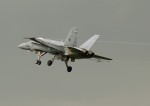





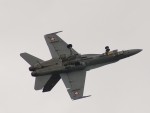
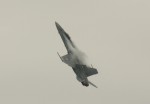
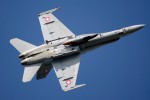
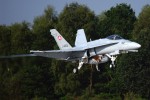

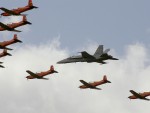
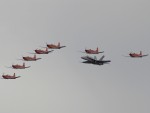



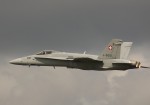
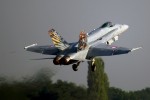

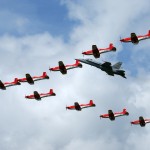
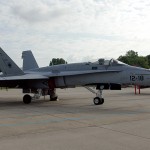
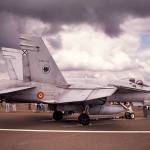

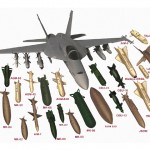
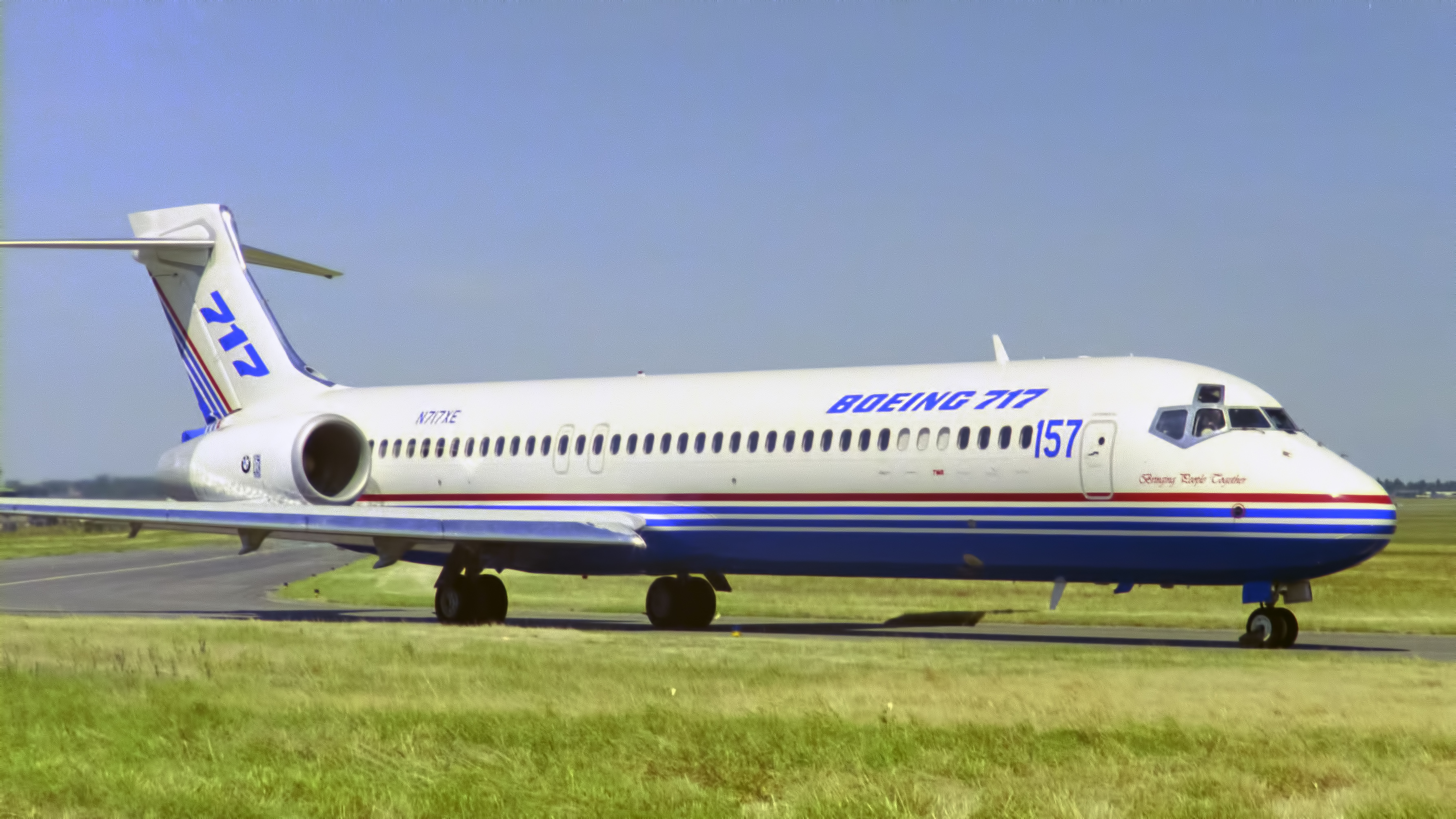

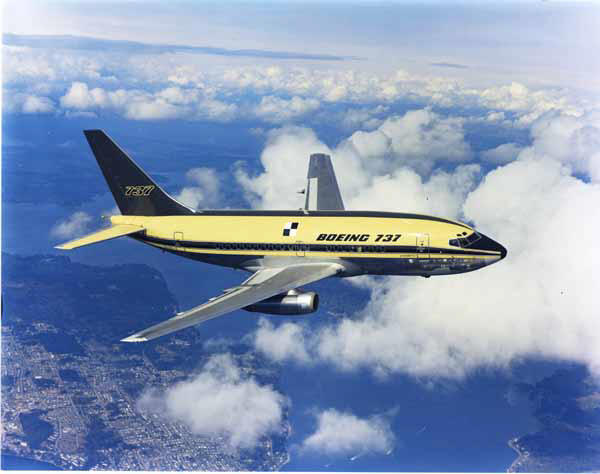
Be the first to comment